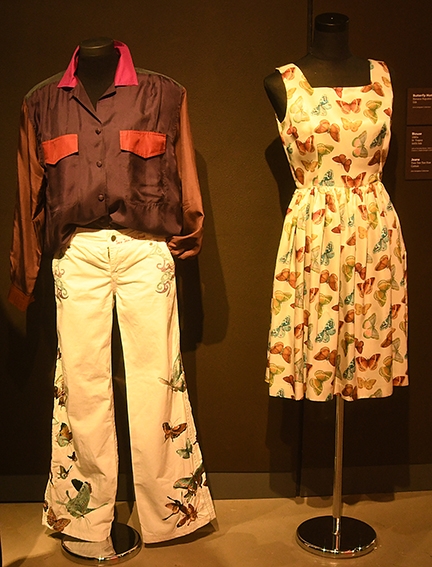
When you attend the seventh annual UC Davis Biodiversity Museum Day on Saturday, Feb. 17 to see 13 museums or collections, be sure to see It's Bugged: Insects' Role in Design, an exhibit in Cruess Hall that explores the connection between insects and people.
Or connects insects and people.
The display will be open from noon to 4 p.m., especially for Biodiversity Museum Day. (Note that the Design Museum exhibit is not open on Saturdays, but this Saturday it is. The event opened Jan. 8 and hours are from noon to 4 p.m. and on Sundays from 2 to 4 p.m, through April 22. Admission is free.)
"Bugged" features the work of Department of Design faculty and graduate students, as well as displays from the Bohart Museum of Entomology and insect photos by UC Davis Ph.D alum Alex Wild, now curator of entomology at the University of Texas, Austin.
Key attractions include the amazing work of professor emerita Ann Savageau of the Department of Design. For the exhibition, Savageau created a trilogy of wall pieces made from hornet nest paper, and a set of sculptures made of wood etched into striking patterns by bark beetle larvae.
The exhibition explores the two sides of the relationship between people and insects, Savageau told the crowd at the opening reception. “The first side shows how makers, designers, architects, and artists draw upon nature's patterns to create beautiful and useful materials and structures. The second side examines the collaboration of humans and insects as producers of raw materials, such as harvested silk and red dye made from cochineal. This human-insect relationship is complex and compelling.”
“Insects have played a significant role in human cultures across the globe for millennia," Savageau related. "They have been revered as sacred, they have been used as food, dye, and ornament. They have been inspiration for human architecture, design and art. And some insect products, namely silk and cochineal, have been big players in global trade networks, economies, and conflicts.”
“But today, insect populations are disappearing at an alarming rate, and the implications for the health of our planet are staggering. Just look at the crash of honey bee populations in the US, and its implications for so many of our crops.”
In her talk, Savageau described the bald-faced hornet, Dolichovespula maculata, "as an animal dear to my heart, because I use the paper from its nest to create artworks. This hornet creates large paper nests that have dozens of layers of paper with air pockets in between. Inside are multiple layers of brood combs where the queen lays hundreds of eggs. The larvae are fed chewed insects by the workers."
The retired professor and now full-time artist works with the patterns etched by bark beetle larvae under the bark of various trees, including pine and fir. "Each pattern serves a specific function for the beetles and their larvae," she said. For her piece titled "Totems," she applied metallic paints to fill in either the beetle galleries or the top layer of wood. She collected the work of six different bark beetle species, each one with a distinctive pattern.
Exhibition curator Adrienne McGraw says of "It's Bugged": “The inspiration we draw from the natural world is endless. The challenge in the exhibit was focusing our story to the links between insects and textiles and forms. We selected key pieces from UC Davis' Joann C. Stabb Design Collection and works from collaborating artists, so the connection to insects could then be explored. Some of these relationships are centuries old, while other ways people are using insects and insect behavior is relatively new. What's exciting to me is to think about all the new products, designs, and technologies that are still to come as people continue to be inspired by insects. And what better place to encourage that than a university setting where so much creative work is already going on?”
Biodiversity Museum Day is free and open to the public. The following will be open from 9 a.m. to 1 p.m.: Museum of Wildlife and Fish Biology; Bohart Museum of Entomology, Raptor Center, Paleontology Collection, Arboretum and Public Garden; Phaff Yeast Culture Collection; and the Viticulture and Enology Culture Collection.
The following will be open from noon to 4 p.m.: Nematode Collection, Botanical Conservatory, Center for Plant Diversity Herbarium, Anthropology Museum, Häagen-Dazs Honey Bee Haven, and the Design Museum.
You can download maps at http://biodiversitymuseumday.ucdavis.edu. Capsule information is here.
Attached Images:
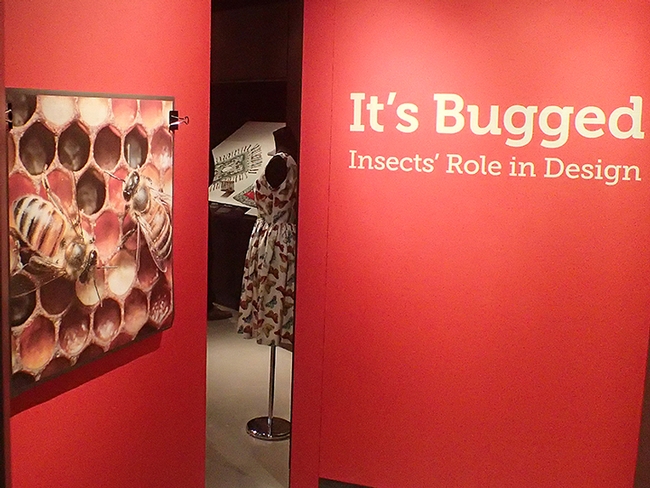
"It's Bugged: Insects' Role in Design," an exhibit in Cruess Hall that explores the connection between insects and people, will be open from noon to 4 p.m. on Feb. 17. The image of bees is the work of Alex Wild. (Photo by Kathy Keatley Garvey)
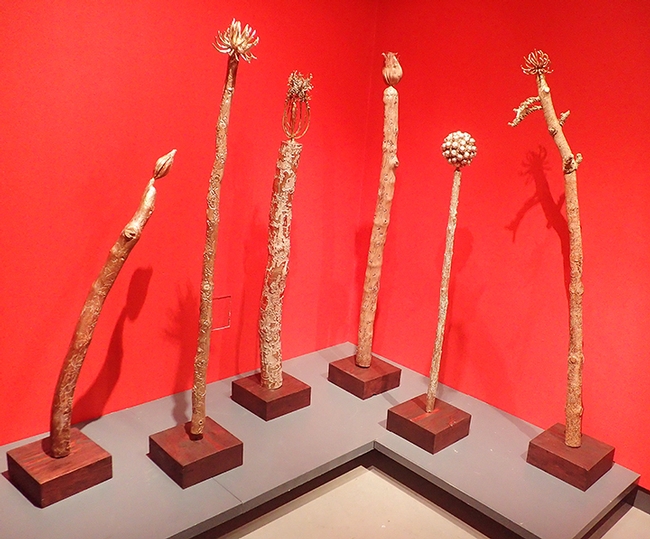
This art by professor emerita Ann Savageau of the Department of Design shows beetle galleries as "Totem Art." (Photo by Kathy Keatley Garvey)
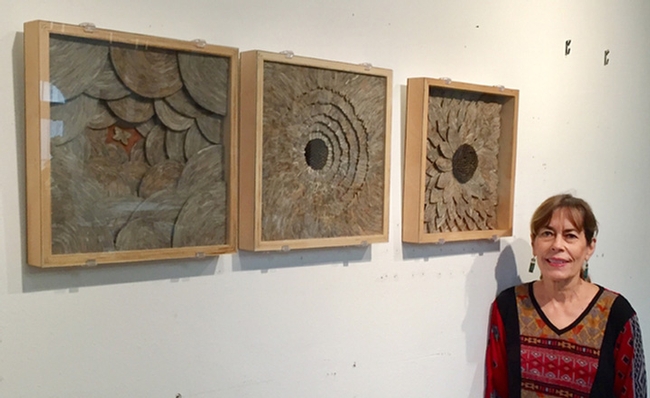
Professor emerita Ann Savageau of the Department of Design with her trilogy of wall pieces made from hornet nest paper.
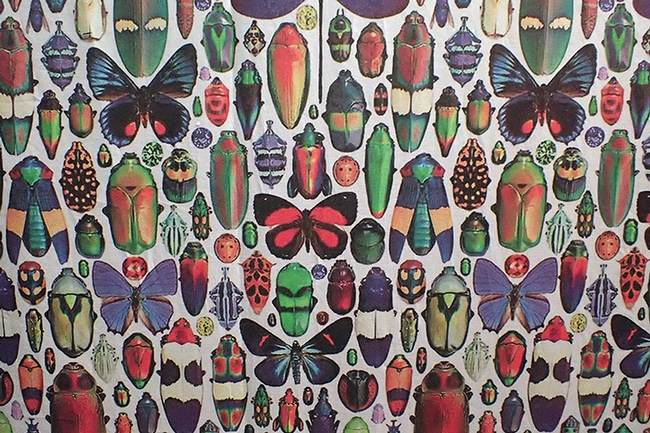
Fabric at the Design Museum definitely says "It's Bugged!" (Photo by Kathy Keatley Garvey)